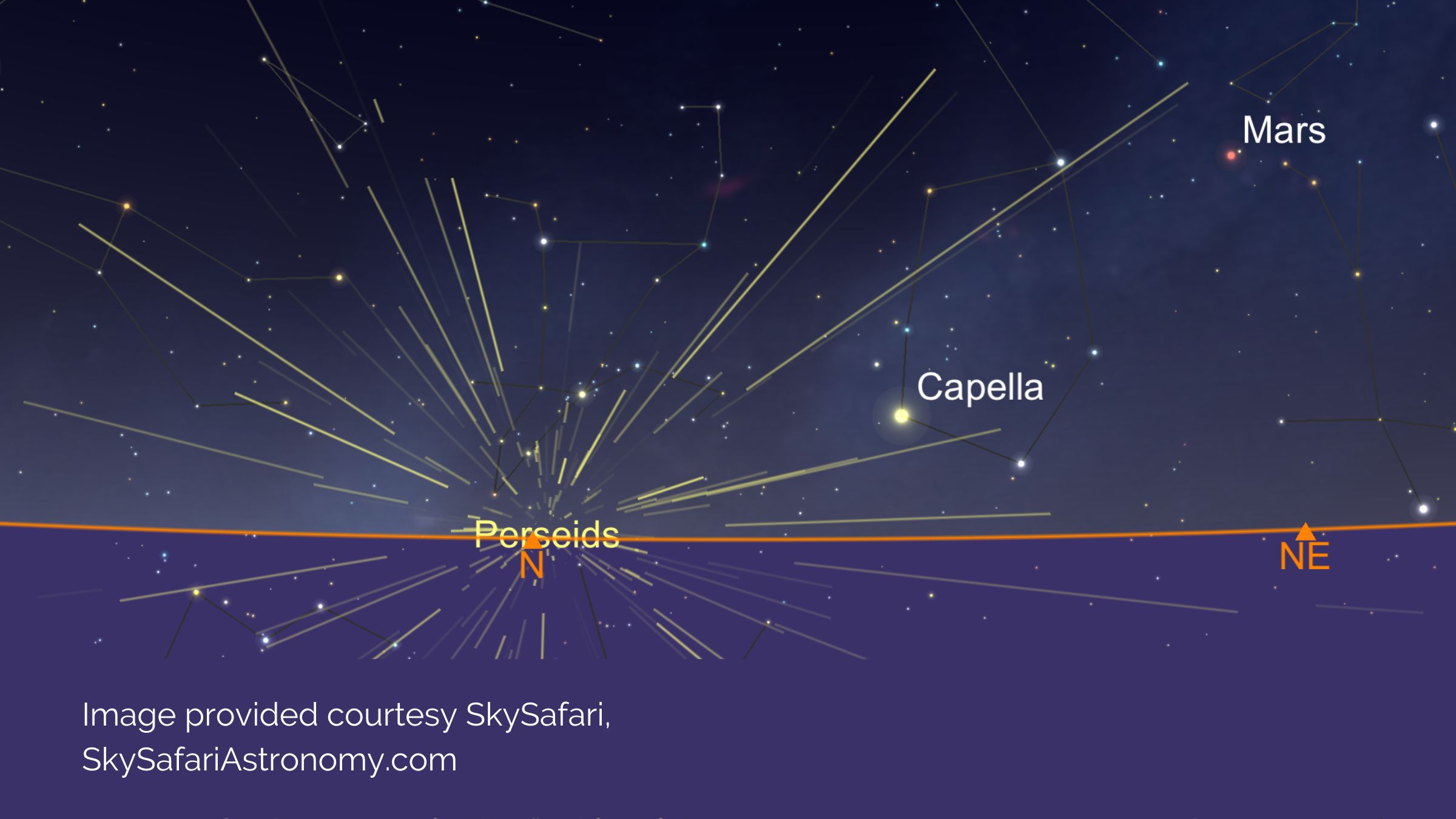The Perseids Meteor Shower is better seen from northern Western Australia or the northern hemisphere. The radiant point, or the point in the sky where the meteors seem to come from, is very low on the horizon for southern WA which reduces the number of visible shooting stars. It is a popular meteor shower to observe in the northern hemisphere with an average of about 100 meteors seen per hour.
This shower emanates from the constellation Perseus, and is generated from comet 109P/Swift–Tuttle. The Perseids are renowned for producing bright meteors.
Is it worth getting out of bed for?
If you’re in northern WA, your chances of seeing more meteors is better than in southern WA. This year’s Perseids coincides with a new moon, so the sky will be dark when you’re away from bright city lights. This will increase your chance to see fainter meteors as well as the bright ones.
When and where to look:
The peak of about 100 meteors/hour is before dawn on 13th August, when it has risen a bit above the northern horizon. The Perseids Meteor Shower is active from 17th July to 24th August.
Use the above image as a guide. Astronomical images provided by SkySafari, a Simulation Curriculum Company, All rights reserved www.simulationcurriculum.com.
What is a meteor shower?
A meteor (commonly called a “shooting star”) is an unexpected, brief streak of light seen in our night sky. It’s caused when space debris, travelling up to 75km per second, enters Earth’s atmosphere. The debris can be as small as a grain of sand which burns up in the atmosphere and causes a bright streak of light to appear briefly in our night sky.
A meteor shower is a celestial spectacle where large numbers of meteors, or “shooting stars”, streak across the night sky. These dazzling events occur when Earth passes through the the trail of debris left by a comet or other object that has come into our Solar System and orbited around the Sun. Visible to the naked eye, meteor showers offer a mesmerizing display of bright streaks, adding a touch of cosmic wonder to the night.
Where’s the best place to see the meteor shower?
The best place to see a meteor shower is away from bright city lights and when the night sky is dark with no moonlight. Bright moonlight and light pollution make it harder to see fainter meteors, however you may still be able to see the brighter ones.
Travel out to a dark sky location at one of WA’s Astrotourism Towns. If you’re an astrophotographer, it is an excellent opportunity to image meteors over some of WA’s iconic landscapes.
You don’t need a telescope or binoculars to see a meteor shower. It’s a great time to gather with friends, roll out your favourite picnic rug, pack the drinks and snacks, and start counting how many “shooting stars” you all see! The predicted hourly rate of meteors presumes you’re viewing them in a perfectly dark sky and that the shower is directly overhead. Fingers crossed for a spectacular show!
Something interesting
Meteor showers are named after the constellation where the “shooting stars” appear to be coming from. If you have a handy smart phone app that helps you identify objects in the night sky, search for the constellation, and you’ll be looking in the right direction.
You might like to…
Become a citizen scientist and report meteor sightings! If you happen to see a very bright meteor (often referred to as a “fireball”), WA’s fireballs team based at Curtin University would love to know! Report your fireball sighting with the International Meteor Organization.
The International Meteor Organization is a great place to discover more about all things meteors. Check out their Meteor Shower Calendar. You might even like to become a member!
Where's the Best Place to see a Meteor Shower?
You need a good dark night sky for the best view! Choose an Astrotourism Town destination. Happy meteor hunting!

